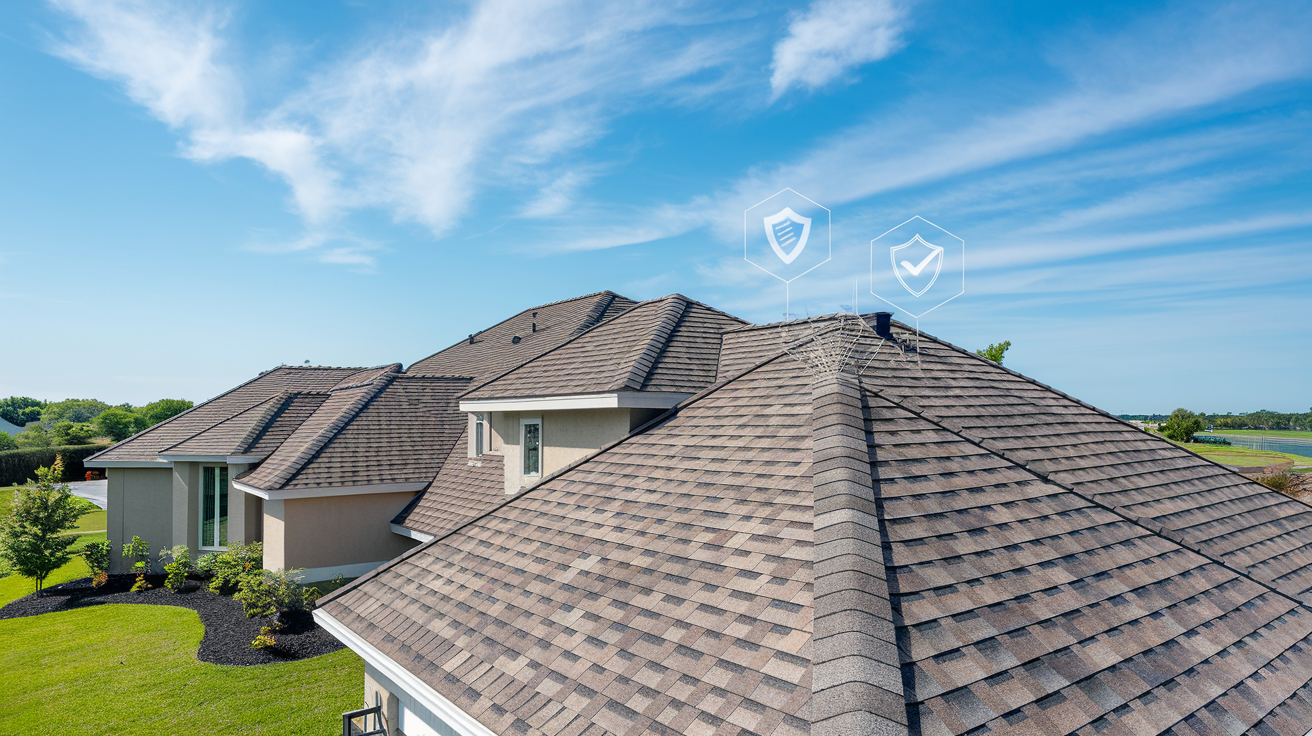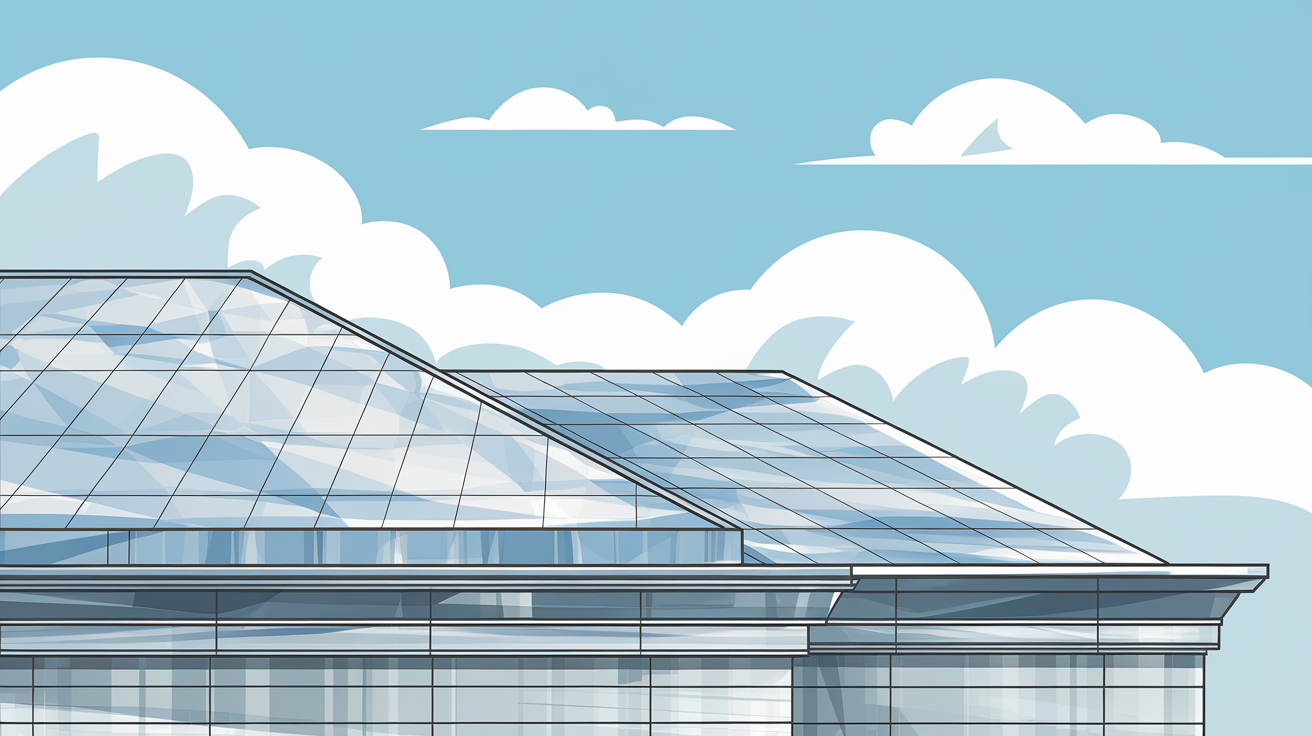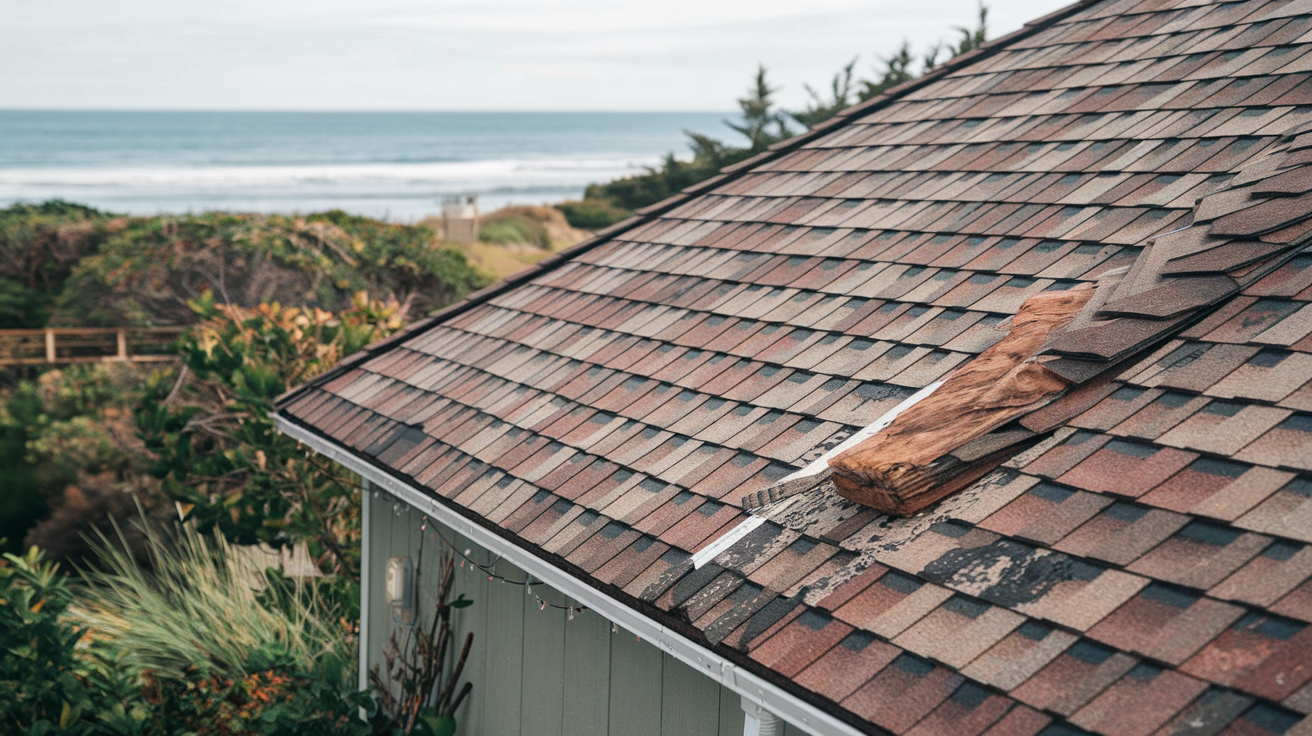Ultimate Guide to Roof Warranties: Protect Your $9,000+ Investment
Every year, thousands of homeowners face unexpected roofing costs because they didn't understand their warranty coverage. With the average roof replacement costing $9,191, having the wrong warranty - or misunderstanding what you have - can be a costly mistake. Whether you're buying a new roof or maintaining an existing one, understanding roof warranties is crucial for protecting your investment and avoiding surprise expenses.
In this comprehensive guide, you'll learn the critical differences between manufacturer and contractor warranties, what's actually covered (and what isn't), and how to ensure you're fully protected. We'll break down complex warranty terms into plain English and show you exactly what to look for in your coverage. You'll discover why some "lifetime" warranties might not last as long as you think, and how to avoid common pitfalls that could void your protection.
Most importantly, you'll get practical, actionable advice on choosing the right warranty for your situation, maintaining your coverage, and handling claims if problems arise. Whether you're a new homeowner or planning a roof replacement, this guide will help you make informed decisions about protecting one of your home's most valuable assets.
Table of Contents
- Introduction to Roof Warranties
- Types of Roof Warranties
- Coverage Details in Roof Warranties
- Navigating Roof Warranty Claims
- Regional Considerations and Cost Implications
Introduction to Roof Warranties
Understanding roof warranties is crucial for homeowners. A roof warranty protects one of your biggest investments by offering protection against damage or failure for a set period. However, roof warranties can be tricky due to the often confusing terms they use. Coverage can include material defects, bad installation, or even weather damage, depending on the specific warranty. Some warranties cover wind damage, while others do not. It's essential to know what your warranty covers to avoid surprise costs later. If your roof fails after the warranty ends, you are responsible for repairs or replacements. Manufacturer warranties on materials can last 20-50 years. Plan ahead by understanding your warranty, so you can make smart choices to ensure your roof protects your home. You can learn more about roof maintenance.

Importance of Roof Warranties for Homeowners
Roof warranties are important because they protect you from unexpected costs. Replacing a roof costs about $9,191 on average. A warranty can help with costs if materials are faulty or there are installation errors. If a manufacturer's warranty covers material defects, they replace the bad materials. If a contractor's warranty covers bad installation, the contractor fixes the problem, potentially saving you thousands of dollars. Warranties offer peace of mind, knowing repairs or replacements might be covered, reducing stress about roof problems. A good warranty can also make your home more valuable. Buyers want homes with reliable roofs. A transferable warranty is a good selling point as it protects buyers from early roof expenses. Understanding roof warranties is essential for protecting your home's value.
Benefits of Roof Warranties
- Protection from unexpected costs
- Potential savings on repairs
- Increased home value
- Transferable to new homeowners
Key Differences Between Manufacturer and Contractor Warranties
It's important to know the difference between manufacturer and contractor warranties. Manufacturer warranties usually cover faulty roofing materials and often last 20 to 50 years. These warranties don't typically cover installation issues, which is where contractor warranties come in. Contractor warranties cover workmanship and usually last about 10 years. They ensure the installation meets quality standards. Understanding these differences is helpful because you'll know who to call if there's a problem and what kind of protection you have. Consider getting a roof assessment.

Types of Roof Warranties
Understanding the different types of roof warranties is crucial for protecting your investment and avoiding unexpected costs. These warranties offer various levels of coverage and duration for different components of your roofing system. Knowing the specifics of each type will help you make informed decisions about your roof and ensure long-term protection for your home.
Manufacturer Warranties: Coverage and Duration
Manufacturer warranties are the most common type, focusing on defects in the roofing materials themselves. These warranties typically cover issues like premature cracking or curling of shingles. The coverage period generally ranges from 20 to 50 years, varying based on the manufacturer and material quality. However, these warranties usually don't cover problems stemming from improper installation or insufficient maintenance. This underscores the importance of hiring qualified roofing professionals. Consider getting a roof assessment to ensure your roof is in top condition.
Understanding Non-Prorated and Prorated Coverage
Many manufacturer warranties offer a non-prorated period, often for 10 or 15 years. During this time, the manufacturer covers the full cost of repair or replacement for defects in their materials. After this initial period, the warranty may become prorated, meaning the coverage amount decreases over time. It's also important to be aware that "lifetime" warranties might not actually last the lifetime of your roof. To learn more about roof maintenance and maximize the benefits of your warranty, follow the manufacturer's guidelines for inspections and cleaning.
Non-Prorated Coverage
- Full cost of repair/replacement
- Typically 10-15 years
- Manufacturer covers all defects
Prorated Coverage
- Coverage decreases over time
- Partial cost coverage after initial period
- May be termed as "lifetime" but limited
Contractor Workmanship Warranties: What They Protect
Contractor workmanship warranties cover the quality of the installation, ensuring the roof is built to industry standards. These warranties typically last between 2 and 10 years, with an average around 10 years. Unlike manufacturer warranties, workmanship warranties address problems caused by faulty installation, such as leaks or structural issues. Choosing a reputable contractor with a solid workmanship warranty protects your investment and provides peace of mind.
Extended and Prorated Warranties: Understanding the Terms
Extended warranties provide coverage beyond the standard manufacturer and workmanship warranties, often for an additional fee. They might be a good choice if you plan to live in your home for an extended period or if your region experiences frequent severe weather. Prorated warranties, as mentioned earlier, decrease in value over time. When considering extended or prorated warranties, assess the long-term value and how it fits your budget and needs.
Coverage Details in Roof Warranties
This section explains what roof warranties typically cover and what they don't. Understanding these details can help you avoid unexpected expenses. We'll explore manufacturer and contractor warranties, highlighting their coverage, exclusions, and limitations.
Common Issues Covered by Manufacturer Warranties
Manufacturer warranties focus on defects in the roofing materials themselves, like shingles or underlayment. Coverage periods typically range from 20 to 50 years, varying by manufacturer and product quality. However, manufacturer warranties generally exclude installation errors, which fall under contractor warranties. Consider getting a roof assessment to evaluate your roof's condition.
Prorated Coverage and "Lifetime" Warranties
Many manufacturer warranties have prorated terms, meaning coverage decreases as the roof ages, shifting more repair or replacement costs to you. "Lifetime" warranties often have shorter periods of full, non-prorated coverage. To learn more about roof maintenance and warranties, visit our comprehensive guide.
Manufacturer Warranty Coverage
- Defects in materials
- Coverage period: 20-50 years
- Excludes installation errors
Typical Coverage Under Contractor Warranties
Contractor warranties cover workmanship issues during installation. They protect you from costs associated with faulty installation, like leaks or improper flashing. These warranties typically last 2-10 years, averaging around 10 years. Problems from installation errors may not surface for several years.
Variations and Extended Warranties
Contractor warranty terms and length vary significantly. Some offer extended warranties with benefits like annual inspections or maintenance. Discuss warranty details with potential contractors before signing any contracts to understand what's covered and for how long.
Exclusions and Limitations: What’s Not Covered
Roof warranties have exclusions. Most don't cover damage from natural disasters like hurricanes or earthquakes. Improper maintenance or unauthorized repairs are also typically excluded. Using an unauthorized contractor for repairs could void your warranty.
Wear and Tear, Aesthetics, and Alterations
Normal wear and tear and cosmetic issues that don't affect functionality are generally excluded. Altering your roof without approval can void the warranty. In conclusion, roof warranties offer important protection, but it's essential to understand their limitations.
Understanding and navigating roof warranty claims can be a daunting process. This section provides a comprehensive guide to common challenges, offers helpful tips for a smoother claims process, and clarifies the role of homeowner's insurance in roof-related issues. Learning how to effectively manage a warranty claim can save you time, money, and stress. Consider getting a roof assessment to proactively identify potential problems.
Common Challenges in Filing Warranty Claims
Filing a roof warranty claim presents several challenges for homeowners. Many warranties cover materials but not labor costs associated with installation errors. Another common challenge is the decrease in coverage over time. Finally, the documentation requirements for claims can be extensive.
Documentation Challenges
Securing necessary documentation can be a significant hurdle in the claims process. It's essential to maintain records from the time of installation. If documentation is missing, contact the manufacturer or contractor. Learn more about roof maintenance to understand the importance of record-keeping.
Common Challenges
- Material vs. labor coverage
- Decreasing coverage over time
- Extensive documentation requirements
Tips for Success
- Review warranty thoroughly
- Maintain detailed maintenance records
- Schedule regular inspections
- Document all communications
Successfully navigating warranty claims requires preparation. First, thoroughly review your warranty to understand coverage and exclusions. Second, maintain detailed records of your roof's maintenance history. Third, schedule regular roof inspections to identify potential issues early. Finally, document all communication with the warranty provider.
Effective Communication Strategies
Clear communication is key to a smooth claims process. Maintain a log file with dates, times, names of individuals contacted, and summaries of conversations. Retain copies of all emails and written correspondence.
The Role of Homeowner's Insurance in Roof Issues
Homeowner's insurance complements roof warranties. While warranties typically cover material or workmanship defects, homeowner's insurance covers damage from unforeseen events like storms or accidents. Understanding your policy's specifics is crucial, as some policies may exclude certain types of damage or have high deductibles.
Coordinating Warranty and Insurance
In cases of overlapping coverage, coordinate with both the warranty provider and your insurance company to determine the best course of action. Consider consulting with a professional for guidance on optimizing your warranty and insurance coverage.
Regional Considerations and Cost Implications
Understanding roof warranties involves not only knowing what's covered but also how regional factors influence your options. Climate, building codes, and preferred materials all play a role in the type of warranty you need and its cost. This section explores these regional considerations and their associated costs to help you find the right protection for your roof.
How Climate and Building Codes Affect Warranties
Climate significantly impacts the type of roof warranty you need. For instance, in hurricane-prone areas, your warranty should explicitly cover wind damage. Coastal roofs often require materials resistant to salt corrosion and high winds. Building codes also vary regionally, setting minimum standards for roofing materials and installation. Non-compliance can void warranties, leaving you unprotected. For a thorough assessment of your roof's compliance, consider our roof assessment.

Regional Material Preferences and Their Impact on Warranties
Regional preferences for roofing materials influence warranty types and durations. Asphalt shingles, popular for their affordability and durability, often carry warranties ranging from 20 to 50 years. Regional climates further influence material choices. Consult local roofing experts and learn more about roof maintenance to understand the best materials and warranties for your region.
Cost Implications of Different Warranty Options
Choosing a warranty requires evaluating the costs of various options. Manufacturer warranties typically cover material defects, while extended warranties might cover installation errors or weather damage. Roof replacement costs vary, averaging around $9,191 depending on material and size. Extended warranties, while pricier upfront, can offer long-term savings by covering repairs excluded from standard warranties. Consider an extended warranty if you live in a severe weather-prone area or have a complex roofing system.
Disclaimer: This blog post is intended for informational purposes only and should not be considered professional roofing advice. Always consult with qualified roofing contractors and insurance professionals for specific guidance regarding your individual circumstances.
